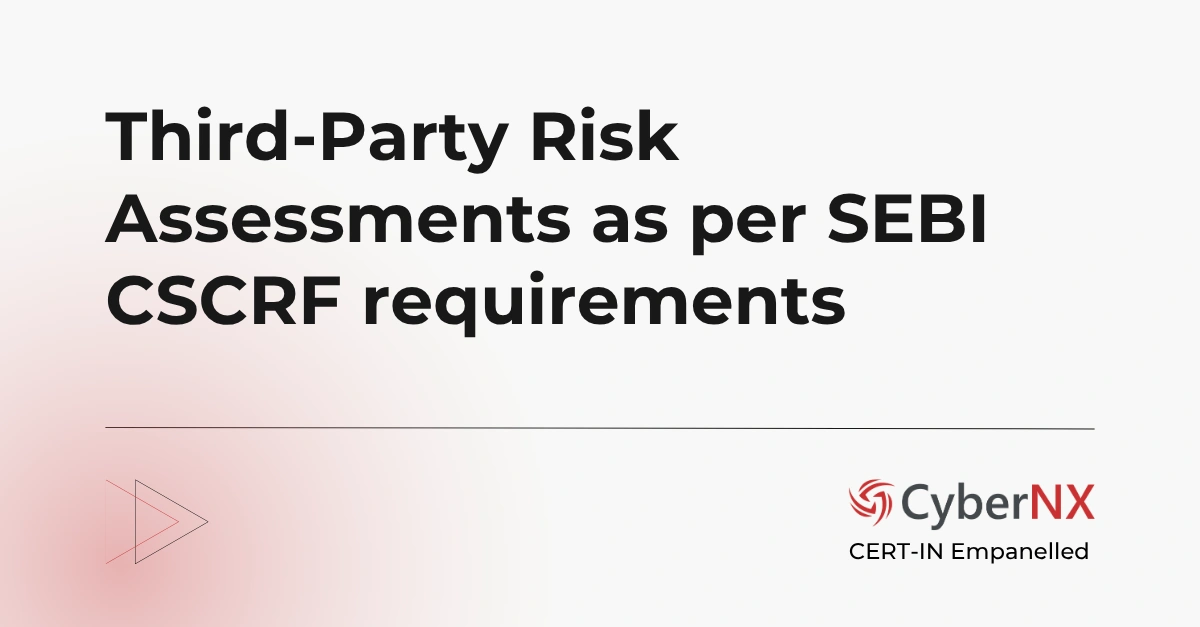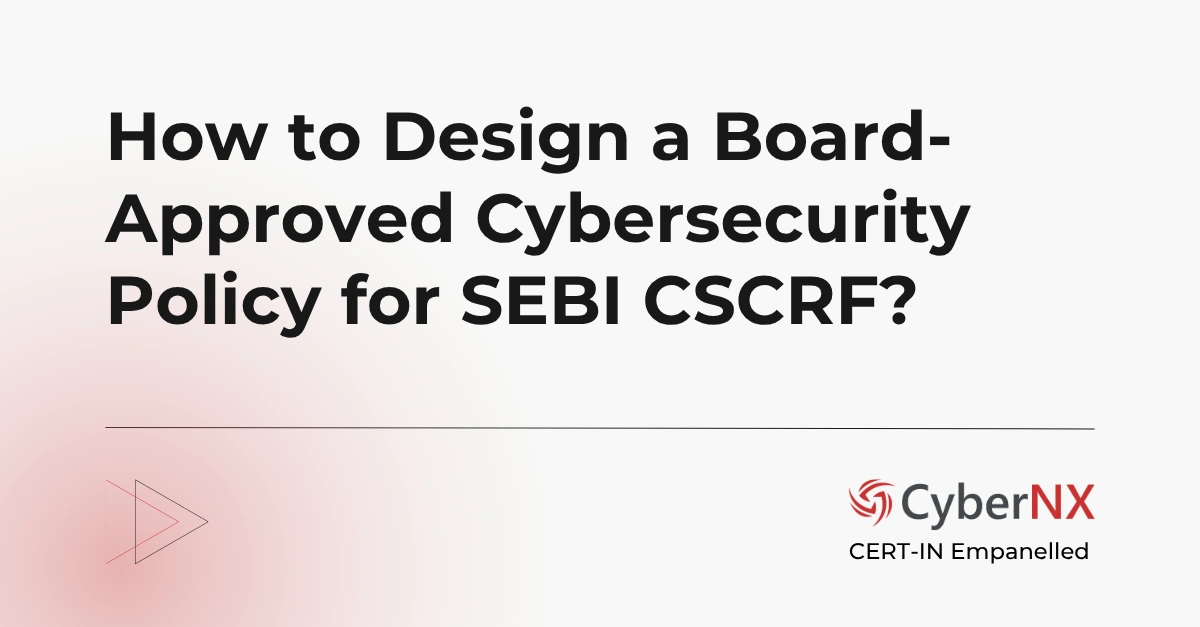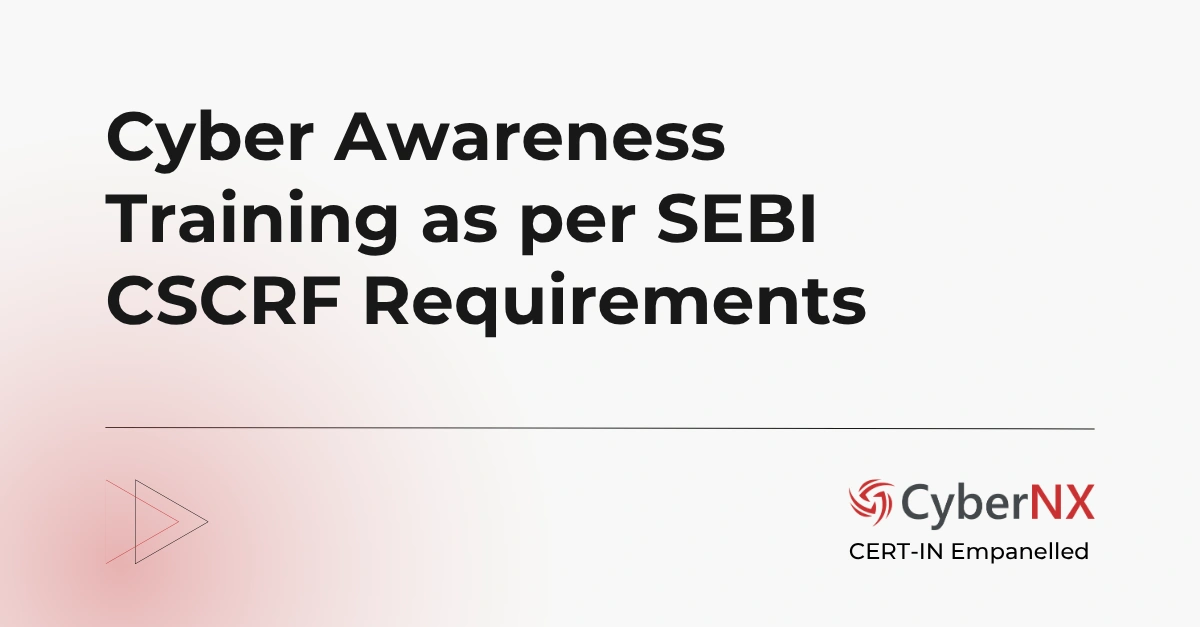The Securities and Exchange Board of India (SEBI) issued the Cybersecurity and Cyber Resilience Framework (CSCRF). The purpose of the CSCRF is to protect operations in the securities market from evolving cyberattacks and to do this the framework sets out standards and guidelines to be implemented by SEBI Regulated Entities (REs). A critical component of this framework is Red Teaming under SEBI CSCRF, which helps simulate real-world cyberattacks to test and enhance an organization’s security capabilities.
What is Red Teaming and Why is it Crucial under SEBI CSCRF?
A red teaming exercise simulates real world conditions in which an adversary attempts to compromise the organisation’s missions or business processes. The objective of red teaming is to identify potential weaknesses within the organisation’s cyber defence. The CSCRF suggests a number of possible scenarios for cyber resilience testing, including DDoS, malware/malicious code attack and application level attacks.
Want to know more about Red Teaming? Read our detailed blog: Red Teaming Guide – Strategies & Best Practices
As per the framework, Market Infrastructure Institutions (MIIs) and Qualified REs are mandated to conduct red teaming exercises twice a year. These simulations mimic adversarial behavior to identify how well an organization can detect, respond to, and recover from advanced persistent threats.
Red Teaming Requirements under SEBI CSCRF
The CSCRF recommends that REs conduct red teaming exercises through the use of red and blue teams and REs should also consider deploying Continuous Automated Red Teaming (CART) solutions to provide ongoing testing and better awareness of attack surfaces.
The CSCRF also contains more general guidelines that may be helpful in achieving red teaming compliance. The framework contains guidelines for scenario-based cyber resilience testing and lists a number of standards that can be adapted for this testing. The CSCRF also provides guidelines for conducting audits and submitting audit reports.
Why Red Teaming Matters Under CSCRF?
Red Teaming aligns with SEBI’s “Detection” and “Response” domains, helping organizations validate their defensive capabilities through realistic simulations of cyberattacks.
How to Integrate Red Teaming into Your CSCRF Strategy?
- Define Objectives: Focus on high-risk assets like trading platforms, customer data, or APIs.
- Board-Level Approval: Red teaming exercises must be backed by the CISO and communicated to senior management.
- Establish Rules of Engagement: Include scope, tools, timing, and legal clearances.
- Align with Incident Response Plans: Red team results should test your detection, escalation, and containment processes.
- Document Lessons Learned: Every red teaming cycle should result in actionable improvements.
Tip: Include red teaming outcomes as part of your CSCRF audit evidence to demonstrate proactive risk management.
How CyberNX Supports Red Teaming Compliance under SEBI CSCRF?
CyberNX can play a vital role in assisting REs to meet their red teaming requirements and other CSCRF compliance obligations.
- Red Teaming Expertise: Provide experienced professionals to conduct comprehensive red teaming exercises tailored to the RE’s specific needs and risk profile.
- Threat Intelligence Integration: Develop realistic attack scenarios that reflect current cyber threats and attack techniques using access to up-to-date threat intelligence.
- Vulnerability Assessment: Conduct thorough vulnerability assessments to identify potential weaknesses that could be exploited during a red teaming exercise.
- Training and Awareness: Provide training and awareness programs to educate the RE’s staff on red teaming methodologies, incident response procedures, and the importance of proactive cybersecurity measures.
Red Teaming under SEBI CSCRF isn’t just a regulatory checkbox – it’s a proactive step toward cyber resilience. Let CyberNX be your compliance partner in navigating SEBI CSCRF requirements with precision.
CyberNX, can help you effectively navigate the complexities of CSCRF compliance and safeguard their operations in the digital age. Contact us for comprehensive CSCRF compliance requirements.
FAQ’S
What is red teaming under SEBI CSCRF?
It’s a mandatory cybersecurity assessment involving realistic attack simulations to test an organization’s resilience, mandated biannually for MIIs and Qualified REs.
What are the benefits of red teaming under SEBI CSCRF?
- Uncovers hidden vulnerabilities
- Strengthens incident response
- Improves overall cyber resilience
- Meets SEBI’s regulatory expectations
Who should conduct red teaming exercises?
Organisations can choose to conduct red teaming exercises using internal security teams or engage external cybersecurity consulting firms. Internal teams may have a better understanding of the organisation’s systems and processes but may lack the experience or objectivity of external experts. External consulting firms can provide specialized expertise, fresh perspectives, and access to advanced tools and techniques.
It’s best to engage external experts like CyberNX for objective, up-to-date threat simulation and expert-driven assessment.
How often should red teaming exercises be conducted as per SEBI CSCRF?
The frequency of red teaming exercises depends on the organisation’s size, industry, risk profile, and regulatory requirements. The CSCRF mandates MIIs and Qualified REs to conduct red teaming exercises on a half-yearly basis. However, organisations may choose to conduct red teaming exercises more frequently based on their specific security needs and risk tolerance.





